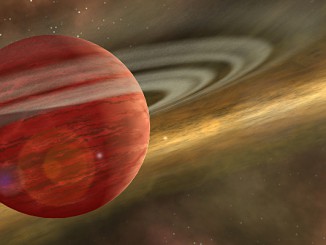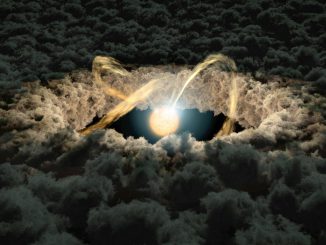
Astronomers have found an exoplanet 20 percent larger than Jupiter that orbits its star every 18 hours, subjecting the world to enormous, probably fatal gravitational stress and hellish temperatures averaging around 1,000 degrees Celsius (1,800 Fahrenheit). It may be at the end point of a long migration from the outer reaches of its solar system.
Located about 1,000 light years from Earth, the planet, known as NGTS-10b, was discovered by the Next-Generation Transit Survey based at the Paranal Observatory in Chile. The survey is intended to discover exoplanets down to the size of Neptune by studying how a host star’s light dims slightly as a planet moves in front of its disc – transits – as viewed from Earth.
“We’re excited to announce the discovery of NGTS-10b, an extremely short period Jupiter-sized planet orbiting a star not too dissimilar from our Sun,” said James McCormac of the University of Warwick Department of Physics and lead author of a paper in Monthly Notices of the Royal Astronomical Society.
“Although in theory hot Jupiters with short orbital periods are the easiest to detect due to their large size and frequent transits, they have proven to be extremely rare. Of the hundreds of hot Jupiters currently known there are only seven that have an orbital period of less than one day.”
Astronomers theorise that Jupiter-class planets form far from their host suns and migrate inward due to interactions with the planetary disc in which they formed or from gravitational interactions with other planets later in their lives. NGTS-10b is now so close to its star that if it orbited the Sun, it would be 27 times closer than Mercury.
“It’s thought that these ultra-short planets migrate in from the outer reaches of their solar systems and are eventually consumed or disrupted by the star,” said co-author David Brown. “We are either very lucky to catch them in this short period orbit, or the processes by which the planet migrates into the star are less efficient than we imagine, in which case it can live in this configuration for a longer period of time.”
The researchers plan to keep tabs on NGTS-10b over the next decade to find out whether the planet will remain in a stable orbit or spiral inward to its doom.
“If we could see the orbital period start to decrease and the planet start to spiral in, that would tell us a lot about the structure of the planet that we don’t know yet,” said co-author Daniel Bayliss.
“Everything that we know about planet formation tells us that planets and stars form at the same time,” he said. “The best model that we’ve got suggests that the star is about 10 billion years old and we’d assume that the planet is, too. Either we are seeing it in the last stages of its life, or somehow it’s able to live here longer than it should.”



